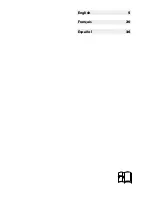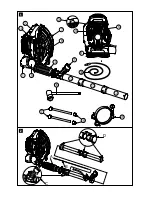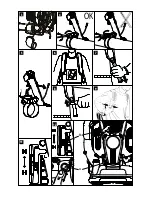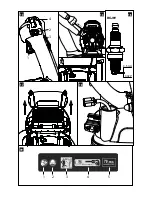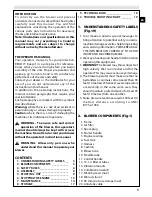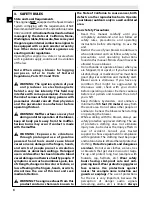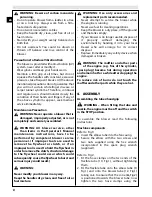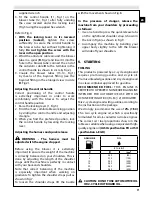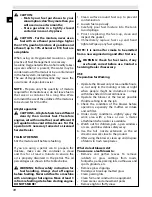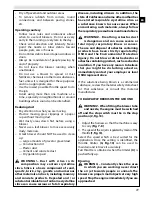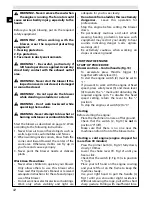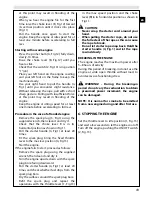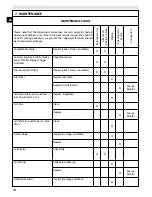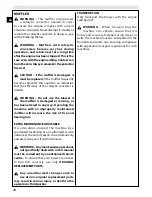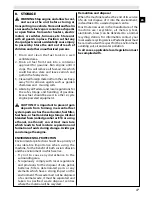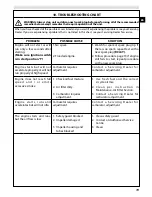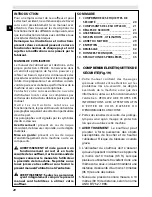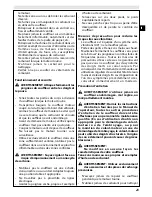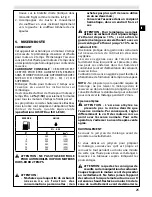
11
en
GB
F
D
E
NL
P
GR
TR
CZ
SK
RUS
UK
PL
H
LV
EST
LT
RO
• Dry off pavement and outdoor areas
• To remove rubbish from corners, round
connections, and between paving stones,
etc.
Operating courtesy
• Follow local rules and ordinances about
when to use leaf blowers. Do not use very
early in the morning or very late in the day.
• Check wind direction and intensity. Never
point the nozzle or blow debris toward
people, pets, cars or houses.
• Do not blow debris toward open windows or
doors.
• Always be considerate of people passing by
and of property.
• Do not leave the blower running when
unattended.
• Do not use a blower to spread or mist
fertilizers, chemicals or other toxic substances,
fuel, unless it is designed for these purposes
and in an appropriate area.
• Use the lowest possible throttle speed to do
the job.
• Avoid using more than one machine at a
time, especially in neighborhoods or around
buildings where sound can be intensified.
Reducing dust
• Pay attention to what you are moving.
• Practice moving grass clippings or a paper
cup without moving dust.
• Wet dusty areas down first before using a
blower.
• Never use a leaf blower to move excessively
dusty materials.
• A leaf blower should NOT be used to clean
up:
— Large amounts of gravel or gravel dust
— Construction dirt
— Plaster dust
— Cement and concrete dust
— Dry garden topsoil
WARNING!– Dust with silica in its
composition may contain crystalline
silica. Silica is a basic component of sand,
quartz, brick, clay, granite and numerous
other materials and rock, including masonry
and concrete products. Repeated and / or
substantial inhalation of airborne crystalline
silica can cause serious or fatal respiratory
disease, including silicosis. In addition, the
state of California and some other authorities
have listed respirable crystalline silica as
a substance known to cause cancer. When
encountering such materials, always follow
the respiratory precautions mentioned above.
WARNING!– Breathing asbestos dust
is dangerous and can cause severe or
fatal injury, respiratory illness or cancer.
The use and disposal of asbestos containing
products have been strictly regulated by
OSHA and the Environmental Protection
Agency. Do not blow or disturb asbestos or
asbestos containing product, such as asbestos
insulation. If you have any reason to believe
that you might be disturbing asbestos,
immediately contact your employer or local
OSHA representative.
If the substance being blown is a commercial
substance, review the material safety data sheet
for that substance or consult the material
manufacturer.
TO BLOW AWAY DEBRIS ON THE GROUND
WARNING! - When fitting the blower tube
and nozzle, the engine must be switched
off and the stop switch must be in the stop
position (2, Fig.13).
1. Adjust the harness so that the machine is easy
to carry (Fig. 7 - 8).
2. The speed of the air jet is regulated by means of the
throttle (1, Fig. 13).
Select the speed which is best suited for the
application. Once the setting is identified, the
throttle limiter (4, Fig.13) can be used to
maintain and retrieve it accurately.
Full throttle is obtained when the limiter (4) is
pushed fully up.
Blowing
WARNING – Constantly check the area
in which you are working: never direct
the air jet towards people or animals.The
blower can propel small objects at very high
speed. Stop the engine immediately if you are
approached.
Summary of Contents for SA 9500
Page 2: ...English 5 Fran ais 20 Espa ol 36...
Page 3: ...1 3 2 11 10 9 12 13 14 7 8 15 4 5 6 16 17 18 19 20 D C A B 1 2...
Page 4: ...OK 1 3 4 6 8 12 5 11 7 9 A B...
Page 5: ...1 2 3 4 RCJ6Y 0 5 mm 0 020 13 15 17 18 19 14 16 4 3 2 1 5...
Page 6: ......
Page 54: ......
Page 55: ......


